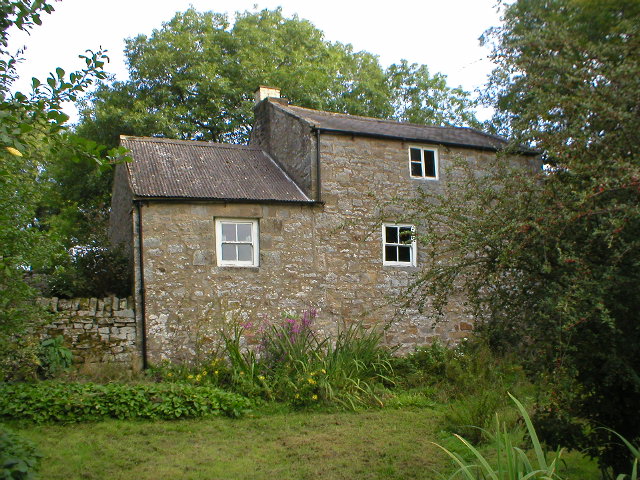the holes in my purse, and I have found a satisfying way to to do so,
working for a very small but sane group of people within sight of the
river Thames.
But I scramble back to the stone caravan as often as I can, to enjoy the
long, long midsummer evenings, and to sleep. Last night I lay down at
9, meaning to rest for a short while before making tea, and dozed off
watching the sheep graze, and the swallows harvesting midges under my
eaves. The tea was finally brewed when I woke - 12 hours later.
Bliss. I think it is the silence. No hum of electricity, no passing
traffic, just the sound of trees and water.
But it's not actually my home at the moment. A pair of swallows have
taken up residence in the stairwell, and are sitting on a brood. They
were still there this morning - I hope I haven't frightened them off.
In some ways it's just as well that I'm not living here full time. The
original core of the croft is a single cube of stone, the walls about
18inches wide, divided into two stories by a beam supported floor. The
size of the windows (tiny and facing out of the wind) suggests that it
dates from 1700, when glass was still rare and expensive. That would
have been towards the end of century in which the Border regions first
started to experience some kind of peace and prosperity, and the
inhabitants starts to move out of the defensive Pele towers and
bastles. People finally felt safe enough to live on the fell with their
flocks all year round, rather that solely through the summer in
temporary turf huts, called "Shiels".
So it must have stayed, a tiny croft with a single loft, reached by a
ladder, and an open fireplace, until 1859, when it was "improved". I
can be sure of the date, because the closed staircase built as part of
that work was papered with issues of local newspapers of that date, and
the cast iron range which was fitted into the vast old cottage fireplace
dates from roughly the same era.
As well as stairs and heat, the tenant or landlord at that time extended
the ground floor, with a tiny scullery to the north end, facing the
fell, and a large room to South, with a pitched ceiling and wider glass
windows.
And so the cottage has stood since, almost unchanged, while it's
neighbours in the tiny hamlet fell into disuse, then ruin, and now can
only be seen as ghostly outlines when the bracken dies back in the winter.
Alas, it was not as well built as the solid little cube onto which it
was latched, and now, another 150 years on, is starting to slide down
the hill and into rubble.
The estate has made the decision to save the house - and the work is
underway. The old plaster has been hacked off the most mobile wall -
revealing daylight peeping through the stones. Iron staples will soon
hold these together. Meanwhile the south most gable end will have to be
underpinned in at least 3 places...
When I walked into the cottage, after an absence of 3 weeks, the rooms
were coated in a fine thick layer of dust, that looked as almost old as
the house itself, and disturbed only by the tracks of small beasts.
Come autumn, everything will need to be washed and polished anew, until
then my belongings look as if they are caught in time, like snapshots
after a disaster.
Then, perhaps, the cottage will stand for another 150 years.
PS. A spider just crawled across the keyboard, and started to spin a
web in the angle of the screen.


1 comment:
Tanya - it's lovely to read about your impressions of the cottage. I remember the young swallows in between training flights would perch on the gutter above the bedroom window and you could have touched their tails they were so close!
Once, young foxes from up the hill stole my (ex)husband's blue and white stripey underpants which were drying outside through the night and I found them next morning half way between the house and their den...
Post a Comment